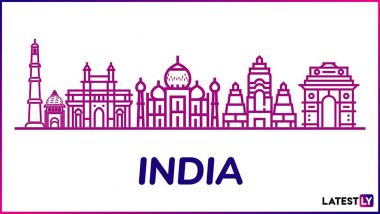New Delhi, Aug 3 (PTI) Delhi can sink deeper into the pollution trap if its planned and unplanned areas are not equally well connected with public transport services and are not made accessible, the Centre for Science and Environment said on Tuesday.
The green think-tank conducted a ground-level survey in 16 planned and unplanned colonies in the capital and found that unplanned settlements were several times more disadvantaged compared to planned ones in terms of locational advantage, connectivity with the larger city, affordability of access, and access to services and transport infrastructure.
If all settlements of Delhi -- planned and unplanned -- are not equally well connected with public transport services and are not made accessible, the capital will fail to implement fully its sustainable, low-emission forms of travel such as walking, cycling or public transport, the CSE said in a statement.
As per the estimates of the draft Delhi Master Plan 2041, the city's population will be 27-30 million by 2041, and 50 per cent of this increase will happen due to migration. By then, Delhi would generate 46.2 million motorised trips daily.
"If such a massive load of daily motorised travel trips are not shifted to public transport to achieve the MPD 2041 target of modal split of 80:20 in favour of public and shared transport, Delhi will remain locked in pollution and carbon trap," said CSE executive director Anumita Roychowdhury.
"This requires immediate improvement in neighbourhood scale accessibility to bus and metro services and minimisation of interchanges. The expectation of MPD 2041 that 50 per cent of Delhi's population will be within the influence zone of mass transit by 2041 and mixed-use development will encourage shift towards public transport, can be fulfilled only if neighbourhood-level design and infrastructure improve for safe and efficient access," she added.
The CSE's ground-level assessment of infrastructure for accessibility in 16 settlements in the southern part of Delhi included neighbourhoods of varying economic status.
These diverse settlements include unauthorised colonies that have been subsequently regularised such as Tughlakabad Extension, Tigri Extension, Govindpuri, Kalkaji, Khanpur, Pooth Kalan and Khirki Extension; resettlement colonies like Garhi and Zamrudpur in East of Kailash; and slum clusters like Jawaharlal Nehru Camp in Kalkaji.
There are also villages that have become part of the urban system like Shahpur Jat and Tughlakabad village. The assessment also includes planned settlements with neigbourhoods of higher income groups including East of Kailash, Kailash Colony, Greater Kailash and Chittaranjan Park.
Comparison of locational advantages and disadvantages of settlements shows that planned settlements are 2.8 times better placed than unplanned settlements. Planned areas have, on an average, 1.6 times more road space and 1.4 times more open qualitative spaces.
On the criteria of 'interface between settlement and the city', planned settlements are about 1.3 times better connected than low-income unplanned settlements. Again, within the low-income settlements, planned low-income settlements have relatively better chances of being located strategically in relation to a major economic hub and important locations within a city.
In unplanned low-income settlements, intermodal transfer requirements increase the waiting time for a mode by 1.1-1.6 times. Most importantly, this increases the cost of the journey. In fact, the monthly cost of transport increases by 1.5-3.5 times, the CSE said.
(The above story is verified and authored by Press Trust of India (PTI) staff. PTI, India’s premier news agency, employs more than 400 journalists and 500 stringers to cover almost every district and small town in India.. The views appearing in the above post do not reflect the opinions of LatestLY)













 Quickly
Quickly


